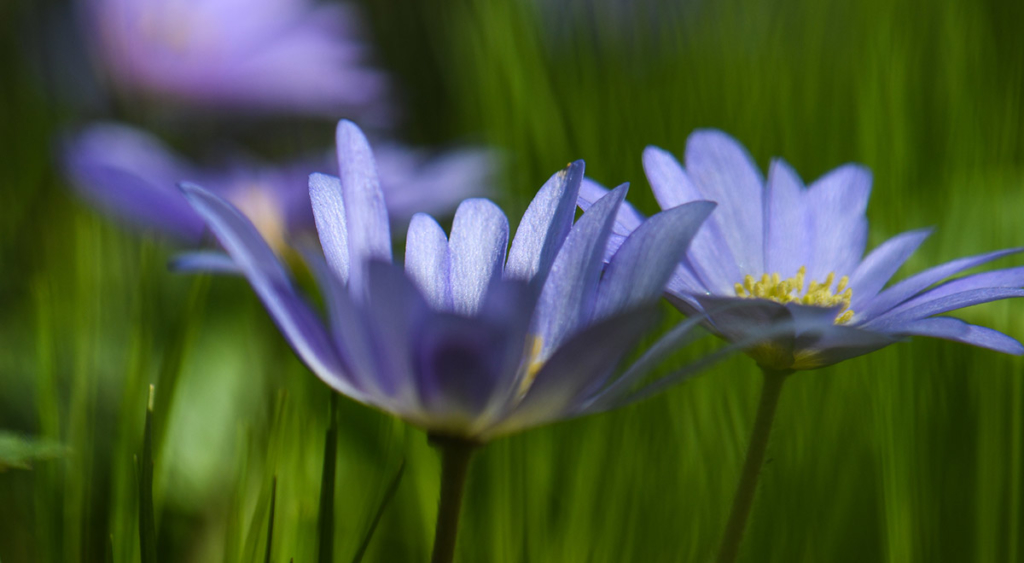
I have the great privilege of teaching a mindfulness class each week for Huntsman Cancer Institute. The class takes place at Salt Lake City’s gorgeous Red Butte Garden. I recently bought a new 85mm macro lens for my Nikon d7500. Red Butte Garden is the perfect place to play with the lens after class. I love the elaborate detail that emerges when I shoot things close up. Sometimes when a particular plant really shines through my lens, I think about different ways I might approach it the following week. Then the next week rolls around and often that flower is gone, only to be replaced by some other gorgeous bloom. Going to the garden is a weekly reminder of the truth of constant change.
A group of meditation teachers once asked Suzuki Roshi, author of the mindfulness classic, Zen Mind, Beginner’s Mind, to sum up meditation in one sentence. His answer: “Everything changes.” It’s easy to see the truth of constant change in our lives. We can observe the evolution of our bodies throughout our lives. We can reflect on changes in our preferences and habits. What I enjoyed in my 20s is vastly different from what I enjoy now. Sometimes the cycles of constant change can be challenging. It can be hard to let go of things we love. At other times, we welcome change.
Constant Change is Not a Choice
The changes that characterize our lives are often beyond our control. For example, we can’t stop the aging process. Relationships change, often without our input. Friends, family and animal companions come and go. We can’t stop these changes from happening. But we can choose how we respond. We can choose whether or not constant change throws us off balance—which it most certainly will at times. Or we can remember that the difficulties we experience in response to change will themselves change at some point.
When we’re happy with the conditions in our lives, we often wish they wouldn’t change. When they inevitably do change, we suffer. Have you ever taken a vacation and wished it would never end? Wanting your situation to be different keeps you from enjoying where you are.
When we’re not so happy with what’s happening in our lives, we respond with aversion. Have you ever gotten angry at being stopped by a stoplight? Have you ever sat in your car, stewing about it until the light changes? This is how we add unnecessary suffering onto a basically neutral situation. It may not be our preference to have to stop, but is it worth getting worked up?
These responses are natural, but they can sometimes layer even more angst onto the situation. Our choice then becomes whether we react with clinging or aversion, or whether we recognize that our present situation is temporary and relax into it as much as possible.
The situations I cited above are relatively easy. Of course, there are pleasant and unpleasant situations that are much more challenging in our lives. But we can practice moderating our responses in these less challenging times, so that when bigger challenges arise, perhaps we can respond more skillfully. That’s what practice is about.
How Mindfulness Helps Us Tune in to Change
We can also practice moderating our responses in meditation. In the same way my macro lens reveals tiny details in the flowers I shoot, mindfulness gives us an intimate look at constant change.
Try this: Place your hands together. You can interlace your fingers, place your hands in Anjali Mudra or touch your fingertips together—whatever you prefer. Now tune into the sensations in the hands. What do you feel? Maybe there are sensations of warmth, coolness, pressure, pulsing or vibration, or something else entirely. Do these sensations stay constant, or do they continuously change? Practice this inquiry for at least 3 to 5 minutes.
When we look closely at what appears to be constant contact between our hands, we can begin to see that the sensations are actually constantly changing. Contact between our hands is not just one thing; it’s a panoply of changing sensations.
This is a microscopic look into what is happening all the time in our lives. In mindfulness practice, we can observe sensations coming and going at very subtle levels. Eventually, we become less reactive as we become more comfortable with the inevitability of change. When we practice mindfulness, we rest in the flow of constant change in our bodies. It becomes familiar enough that we no longer see change as a problem, but rather simply as the natural state of our lives.
Practicing mindfulness is kind of like a musician practicing scales. You practice scales and arpeggios so that you develop facility with combinations of notes that you will likely encounter when you play music. When we learn to rest in the flow of constant change, we become better able to respond skillfully to the bigger changes we experience every day of our lives.
